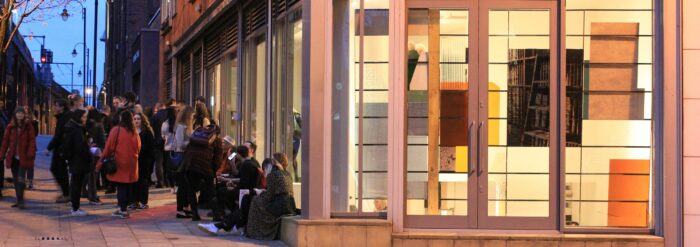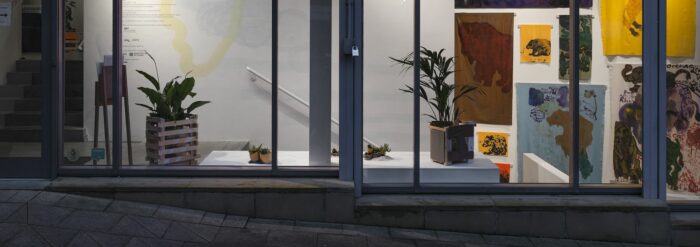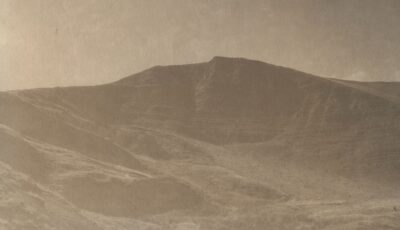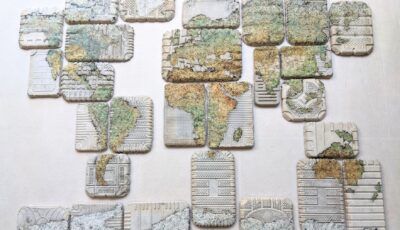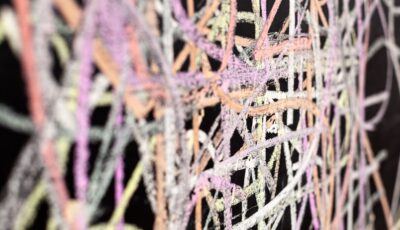
Artists and Sustainability: Dr Melanie King
Posted on 16 April 2025
This month we’ve invited Dr Melanie King to contribute to our ongoing series Artists and Sustainability Spotlight, where we ask artists to share short responses about their work and how it might relate to climate change.
Dr Melanie King is a working class artist and curator, originally from Manchester, UK. Melanie is now based in Kent, UK. She is co-Director of super/collider, Lumen Studios and founder of the London Alternative Photography Collective. Melanie is Lecturer In Photography at Canterbury Christ Church University. She has recently completed her PhD at the Royal College of Art. She is represented by the Land Art Agency.
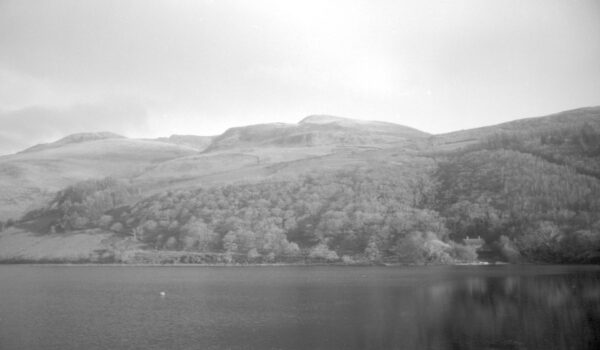
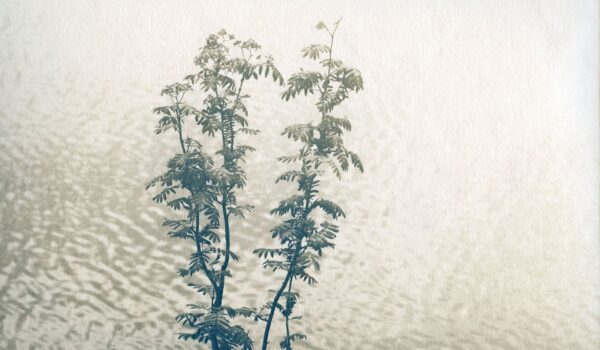
In what ways do you feel your work might relate to issues of climate change and sustainability, in the content of the work, its narrative, conceptually or theoretically. How might it speak to or challenge public discourse?
My interest in climate change and sustainability originated through the lens of astronomy. As we learn how life is rare in both time and space, we come to realise how precious our little Earth is.
My recent practice-based PhD ‘Ancient Light: Rematerialising The Astronomical Image’ highlighted the interconnections between the cosmos, ecology and photographic materiality. In my project ‘Precious Metals’, I began to learn more about the entanglements of materials such as silver, which can only be formed in high energy stellar events, and are an important material used in analogue photography. Ultimately, this led to me opting to find more sustainable methods of producing my artwork. In the ‘Precious Metals’ project, I worked with Professor Leah-Nani Alconcel at the University of Birmingham to recycle silver from discarded photographic fixer, thus becoming less reliant on extractive silver mining.
I am part of a wide network of artists within the Sustainable Darkroom community who are investigating the materials that they work with, suggesting more sustainable alternatives. On a singular scale our impact is low, but our collective power is substantial.
Several of my projects are directly influenced by climate change. My project Submerged Landscapes, investigates how Thanet (where I currently live) used to be an island, considering how the land surrounding it was drained for agricultural reasons. I am documenting areas that are now vulnerable to flooding, due to sea level rise. It is likely that, one day, Thanet will be an island again. In this project, I am using the materiality of the ocean to produce images, including a film developer made from seaweed, anthotype prints made from sea spinach and photographic ‘fixer’ made from saltwater from the sea.
I regularly curate exhibitions and have recently collaborated on three London Alternative Photography Collective exhibitions with the title ‘Symbiosis’, along with Harri Harrison and Ky Lewis. This exhibition series explores the relationship between image makers, the more-than-human, and alternative photographic processes.
I am an artist of working-class origin, and grew up in Openshaw, East Manchester. It is vital for class to be part of the discussion around sustainability, as those with the least income will be the worst affected.
With regards to the materials, processes and techniques you use to produce your work, are there any practical decisions you make with regard to climate change and sustainability?
First and foremost, I recognise that air travel has a significantly negative impact on climate change, so I have resolved to limit air travel where possible. I try to take public transport where possible.
Much of the artwork I have produced since 2019 has looked into the sustainability of analogue photography and printmaking, which is often entangled with landscape photography.
In 2023, I received an Arts Council England DYCP grant for ‘Acquaintance’’, which explored the creative possibilities of botanical cyanotype toning and sustainable photographic processes. This exploration considered how location-specific sustainable photographic processes can produce bodies of work that are materially connected to the landscape. This project was centred on the Peak District and surrounding areas, close to where I grew up. I was not able to regularly access this landscape as a working-class young person living in Manchester. This enquiry allowed me to become reacquainted with the landscape, through the lens of photography and through the material engagement with plants identified in the environments I visited.
Recently, I received an A-N Bursary to attend the Mawddach Residency in North Wales. For the past few months, I have produced duotone cyanotypes of the landscape using botanical toners and plant based film developer for astrophotography.
I recently had a solo exhibition of my ongoing collaborative project ‘In Praise Of Raw Data’ at the Salon Gallery in Margate. This exhibition was a result of an ongoing collaboration between myself and Dr Claudia Mignone, an astronomer and science communicator at INAF – Istituto Nazionale di Astrofisica, Rome. This project highlighted the beauty of raw data artefacts resulting from cosmic interactions with telescope sensors. It comprised several colour printing processes and sustainable printing techniques, which mimic digital astronomical post-processing techniques. These processes included risograph prints and sustainable screen prints made using oak gall / soya based inks and recycled papers. The screen prints were made in collaboration with photographer Clare Hewitt, botanical ink maker Carolyn Morton and paper maker Danielle Phelps.
Though these contributions are small, I think it is important to make hopeful actions in the face of climate change, which can often feel quite overwhelming.
It allows us to think of how to be sustainable in other areas of my life. For example, I began building a garden to produce sustainable materials for my artwork. I have never had a garden due to previous living situations but now I have the space. What started as an interest for my practice has become a joy to tend to, and I have noticed that the biodiversity of my garden has increased in the five years that I have lived in my house.
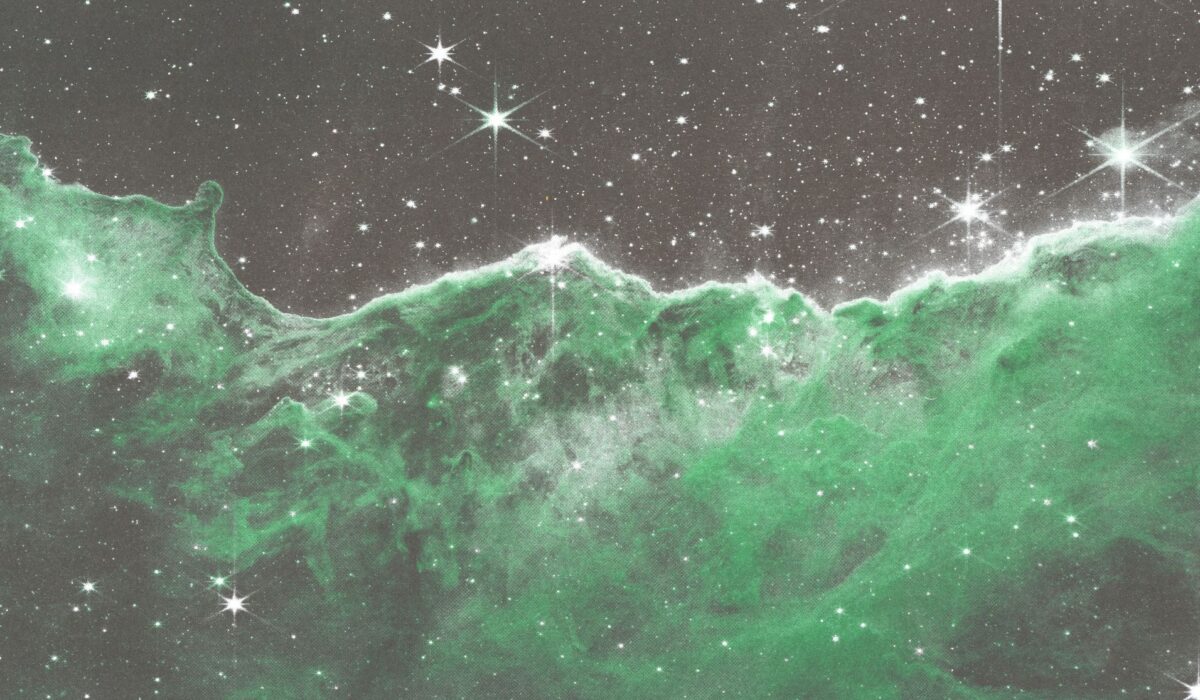
In general, how do you feel galleries, art spaces, artworks and artists might be able to contribute? What if any role do you feel they can play in a progressive conversation?
I think that there are several things that galleries and art spaces can do;
- Use sustainable materials to produce exhibitions – for example, finding alternatives to vinyl lettering, printing with recycled papers etc.
- Commissioning artists to focus on projects surrounding climate change and sustainability.
- When working with international artists, giving options to engage digitally, to reduce travel emissions. Encouraging public transport, and offering financial help to make this more accessible.
- Engaging with communities to increase awareness of the natural world.
As a working-class teenager from Openshaw, the local canal and reservoirs were my main experience of the natural world. Youth workers opened my eyes to locations beyond East Manchester and encouraged me to follow my dreams of becoming an artist – something which did not feel accessible beforehand. As a result, I believe that engaging with the natural world as a young person can have meaningful and long lasting implications in the future. Galleries and art spaces can provide workshops and trips which allow young people to have these experiences.
With my super/collider collaborator Louise Beer, we have been commissioned to work with communities in natural settings. For example, in September 2024, we led microscope and telescope workshops with In Situ at Harwes Farm in Colne. In Summer 2022, we were commissioned by Signal Film and Media with Forestry England to co-produce a new artwork with local participants. super/collider and the local participants explored experiences of forest spaces. As a group, we looked into the different histories of Grizedale Forest and how it is being managed in the face of the climate crisis.
Are there any tips or advice, anything you have learnt you might want to share with other artists or our audiences?
Do not lose hope. Currently, the world feels dark, but hope allows us to push against the powers that be.
Writer and activist Rebecca Solnit encourages activism as a way to maintain hopefulness;
Political awareness without activism means looking at the devastation, your face towards the centre of things. Activism itself can generate hope because it already constitutes an alternative and turns away from the corruption at the centre, to face the wild possibilities and the heroes at the edges or at the side. (Solnit, 2005, 24)
In connection with this, Donna Haraway considers two possible reactions to negative human impacts on the environment. The first is ‘a dangerous amount of faith in the possibility that technology could save us from catastrophe’. The second is nihilism: ‘a position that the game is over, it’s too late, there’s no sense trying to make anything any better, or at least no sense having an active trust in each other working and playing for a resurgent world’. (Haraway, 2016, 3)
These writers help us to both keep ourselves educated and aware of the environmental and political horrors that we witness every day without descending into despair. They encourage us to act in whatever way we can, whether that is through our art practices, protesting, signing petitions or finding greener alternatives in our everyday lives.
- Solnit, R. (2005) Hope in the Dark: Untold Histories, Wild Possibilities. Edinburgh: Canongate.
- Haraway, D. (2016) Staying with the Trouble: Making Kin in the Chthulucene, Experimental Futures: Technological Lives, Scientific Arts, Anthropological Voices. Durham: Duke University Press.
Links
Website
melaniek.co.ukImages
Banner:
- Dr Melanie King, Acquaintance: Mam Tor, Cyanotype toned with oak gall, 2023. Supported by Arts Council England.
From left to right, top to bottom:
- Dr Melanie King, Mawddach Estuary, Seaweed Gin Film Developer, 2025. Produced during the Mawddach Residency, supported by an A-N Bursary.
- Dr Melanie King, Acquaintance: Dovestones, Cyanotype toned with valerian leaves, 2023. Supported by Arts Council England
- Dr Melanie King, In Praise Of Raw Data: Carina Nebula, JWST, Risograph Print, 2024. Made with Park Press, Margate. Supported by Canterbury Christ Church University and Patreon subscribers.
